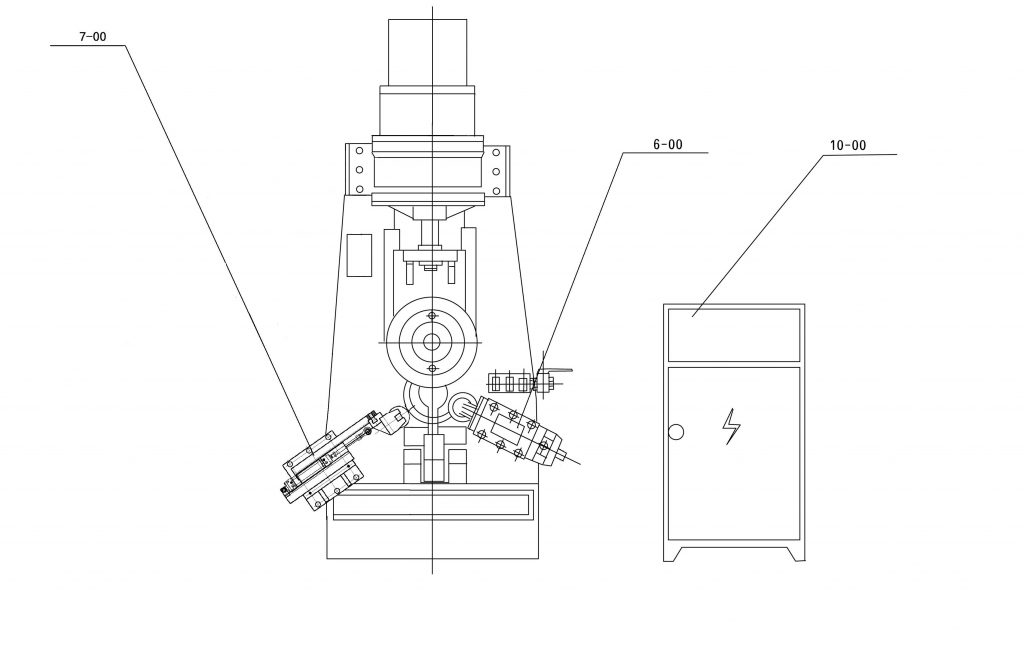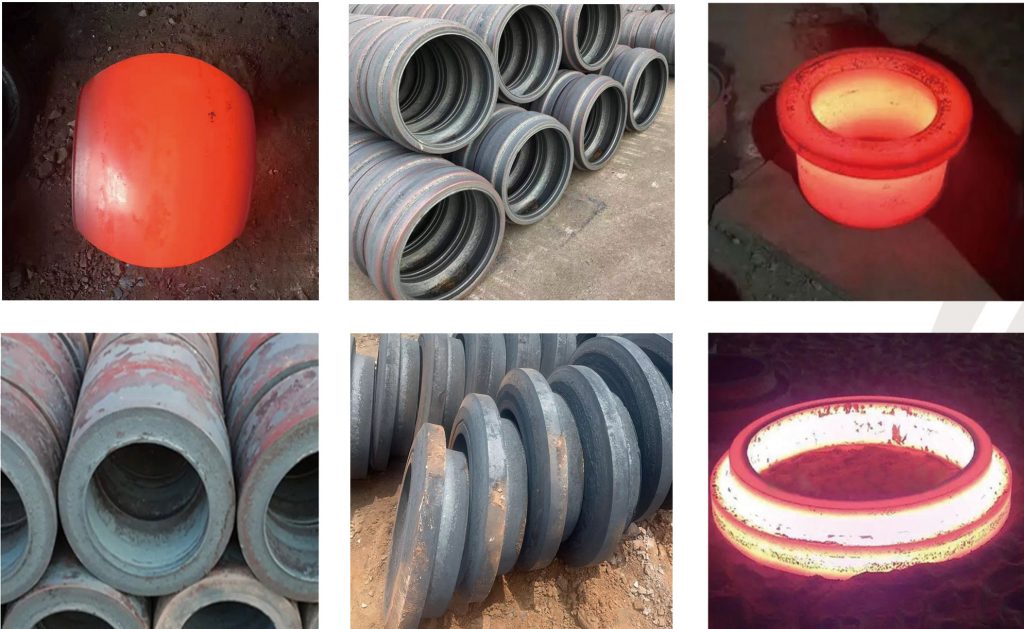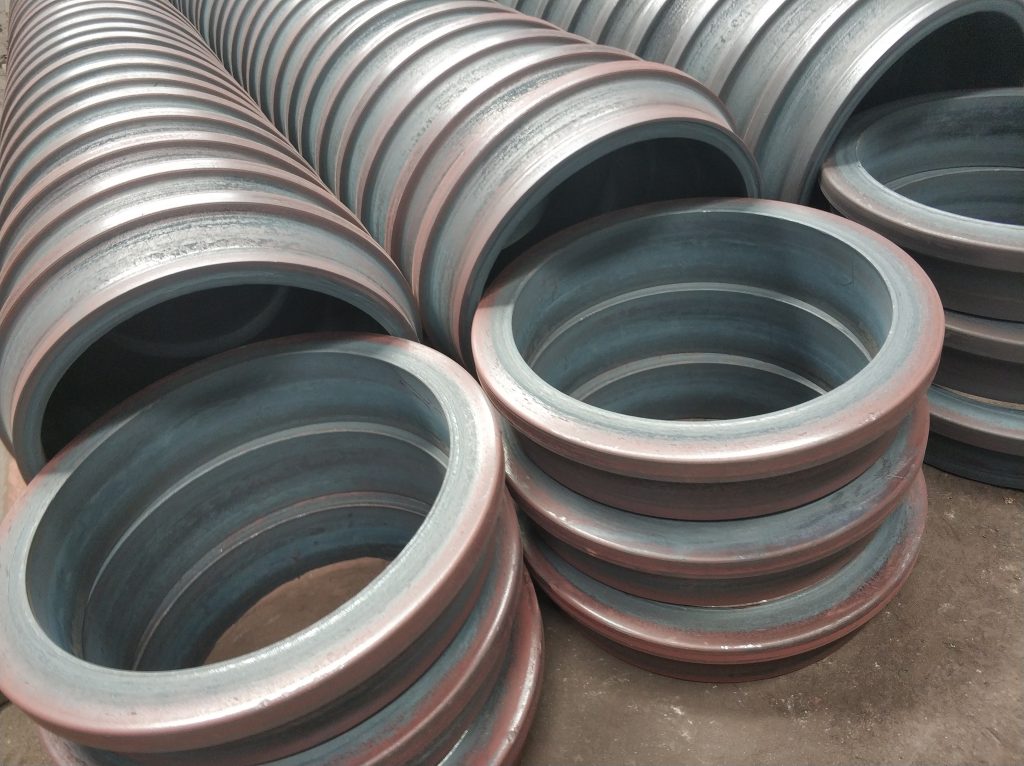Introduction to Ring Rolling Machine
Ring Rolling Machine is a specialized piece of industrial equipment used in the manufacturing process of seamless rings. The machine operates on the principle of metal deformation, utilizing pressure and rotation to create uniform, high-strength circular components. This technology has been a cornerstone in industries like aerospace, automotive, and energy production, where precision and durability are paramount.
The concept of ring rolling dates back to the early 20th century, where traditional methods of forging and shaping metals were labor-intensive and time-consuming. Over the years, technological advancements have transformed this process into an efficient, automated system, ensuring consistent quality and reduced production time.
How Ring Rolling Machines Work
The Basic Working Principle of Ring Rolling
The core principle of ring rolling involves applying pressure to a pre-formed metal ring. The process starts with heating the metal to a malleable state. The heated ring is then placed between two rolls: a main roll and a mandrel roll. As the rolls rotate, the ring's diameter increases while its thickness decreases, resulting in a seamless, precisely shaped ring.
Components of a Ring Rolling Machine
- Main Roll: Exerts pressure to shape the ring.
- Mandrel Roll: Provides support and ensures consistent shaping.
- Hydraulic Press: Helps with pre-forming the blank ring.
- Heating Furnace: Ensures the metal reaches an appropriate temperature.
- Automation Controls: For precision and repeatability.
Types of Ring Rolling Machines
Vertical Ring Rolling Machines
Vertical machines are ideal for smaller rings and are commonly used in industries where precision is critical. They take up less floor space and are easier to operate for small-scale production.
Horizontal Ring Rolling Machines
Horizontal machines are better suited for producing larger rings, such as those used in wind turbines or heavy machinery. These machines provide stability and greater force for handling massive components.
Applications of Ring Rolling Machines
Ring rolling machines are indispensable in various industries due to their versatility and efficiency. Some of the key applications include:
- Aerospace: Manufacturing jet engine components and turbine rings.
- Automotive: Production of bearing races and gear rings.
- Energy: Creation of wind turbine parts and nuclear reactor components.
- Construction: Forming large flanges and structural components.
Materials Used in Ring Rolling
Common Materials
- Steel: Known for its durability and strength.
- Alloys: Titanium, nickel, and chromium for aerospace and high-performance applications.
- Aluminum: Lightweight rings for automotive and aerospace industries.
Material Selection Criteria
- Application-specific requirements.
- Strength-to-weight ratio.
- Corrosion resistance.
- Cost and availability.
Advantages of Ring Rolling Machines
- Cost Efficiency: Reduces material waste and machining time.
- High Strength: Produces seamless rings with superior strength.
- Precision: Achieves consistent dimensions and tolerances.
- Versatility: Accommodates a wide range of materials and sizes.
Limitations of Ring Rolling Machines
- Initial Investment: High cost of machinery and setup.
- Size Limitations: Challenges in producing very small or very large rings.
- Material Constraints: Certain materials may not be suitable for ring rolling.
Key Features of Modern Ring Rolling Machines
Modern machines are equipped with features like:
- CNC Controls: For precision and automation.
- Advanced Sensors: To monitor temperature, pressure, and dimensions.
- Energy Efficiency: Designed to minimize energy consumption.
- Customization: Tailored solutions for specific industries.
Ring Rolling Process Explained
- Pre-Forming: The metal blank is cut and heated.
- Shaping: The ring is rolled between the main and mandrel rolls.
- Finishing: Final touches to ensure the required specifications are met.
Ring Rolling vs Other Manufacturing Processes
Compared to forging, casting, and machining, ring rolling offers:
- Less material waste.
- Higher structural integrity.
- Faster production times.
Popular Manufacturers of Ring Rolling Machines
- SMS Group: Known for advanced technology and durability.
- Wagner: Specializes in large-scale machinery.
- Fagor Arrasate: Offers customizable solutions.
Maintenance and Operation of Ring Rolling Machines
Common Maintenance Practices
- Regular lubrication of moving parts.
- Inspection of rolls for wear and tear.
- Calibration of sensors and automation systems.
Tips for Efficient Operation
- Proper training for operators.
- Scheduled downtime for maintenance.
- Use of high-quality materials to reduce wear.
Future of Ring Rolling Machines
Emerging trends include:
- Automation: Increased use of AI and robotics.
- Sustainability: Eco-friendly practices and energy-efficient designs.
- 3D Printing Integration: For prototyping and hybrid manufacturing.
How to Select the Right Ring Rolling Machine
Factors to consider:
- Production volume and size requirements.
- Budget and return on investment.
- Specific industry needs.
Case Studies of Ring Rolling Machines
- Aerospace Industry: Manufacturing turbine components with precision and minimal waste.
- Wind Energy: Production of large rings for turbines, reducing lead times and costs.
FAQs About Ring Rolling Machines
- What is the purpose of a ring rolling machine?
A ring rolling machine is used to create seamless rings with precise dimensions for industrial applications. - What materials can be used in ring rolling?
Common materials include steel, alloys, aluminum, and titanium. - How does ring rolling differ from forging?
Ring rolling is more efficient and produces less waste compared to forging. - What industries use ring rolling machines?
Aerospace, automotive, energy, and construction industries. - What are the benefits of ring rolling?
High strength, cost efficiency, and precision. - How much does a ring rolling machine cost?
Costs vary based on size, features, and manufacturer, ranging from $20,000 to several million dollars.








